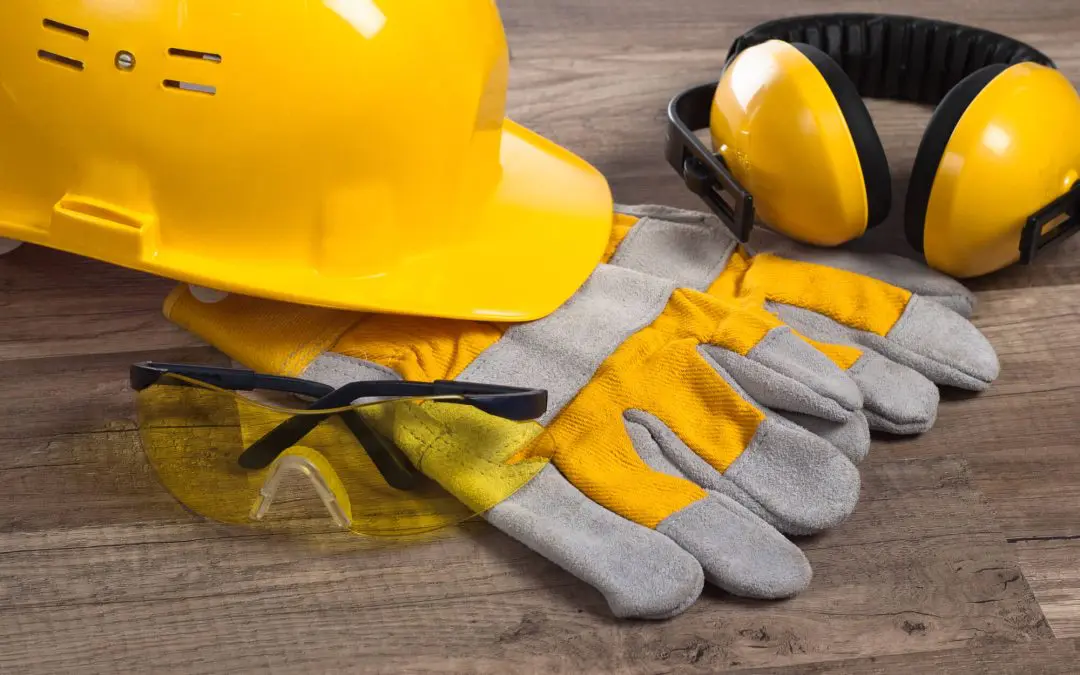DIY projects can be immensely rewarding, but it’s crucial to prioritize safety at all times. Whether you’re a seasoned DIY enthusiast or just starting out, having the right safety gear can make all the difference in preventing accidents and injuries. In this guide, we’ll outline some essential DIY safety gear you should own to protect yourself while working on projects around the house.
DIY Safety Gear: Protective Eyewear
Your eyes are vulnerable when working with power tools, chemicals, and flying debris. Investing in high-quality safety glasses or goggles can prevent eye injuries and ensure clear vision while you work. Look for options that provide full coverage and are impact-resistant for maximum protection.
Ear Protection
Many DIY projects involve loud noises from power tools, machinery, or hammering. Prolonged exposure to high noise levels can lead to hearing damage over time. To safeguard your hearing, wear earplugs or earmuffs designed to reduce noise levels.
Respiratory Protection
Dust, fumes, and airborne particles pose a risk to your respiratory health, especially when working with materials like wood, paint, or chemicals. Respiratory protection, such as disposable masks or respirators, can filter out harmful particles and prevent inhalation-related health issues. Choose a mask rated for the specific contaminants you’ll encounter during your projects.
DIY Safety Gear: Gloves
Wearing gloves protects your hands from cuts, burns, and abrasions when handling rough materials, sharp objects, or chemicals. Choose gloves suitable for the task at hand—for example, heavy-duty leather gloves for handling rough materials and chemical-resistant gloves for working with hazardous substances.
Safety Footwear
Proper footwear is often overlooked, but preventing slips and falls in the workshop or construction sites is crucial. Sturdy work boots with slip-resistant soles and toe protection provide stability and protect your feet from falling objects or sharp debris.
Head Protection
A hard hat is essential in environments with a risk of falling objects or low-hanging obstacles. Whether working on a construction site or in your garage, a durable hard hat can protect against head injuries.
Add Knee Pads to Your DIY Safety Gear
DIY projects often involve kneeling or working on hard surfaces for extended periods, which can hurt your knees over time. Knee pads provide cushioning and support, reducing the risk of knee strain, bruising, and long-term joint damage. Look for knee pads with adjustable straps for a comfortable fit.
First Aid Kit
Despite your best efforts to stay safe, accidents can still happen. A well-stocked first aid kit is a must-have for any DIY enthusiast. Make sure your kit includes bandages, antiseptic wipes, gauze pads, adhesive tape, tweezers, scissors, and any medications or supplies specific to your needs or health conditions.
Fire Extinguisher
Fire risk is always present when working with power tools, flammable materials, or electrical equipment. Keep a fire extinguisher readily accessible in your workshop or workspace and familiarize yourself with how to use it properly in an emergency.
Safety Training and Knowledge
Perhaps the most important safety precaution is training. Take the time to educate yourself about the potential hazards associated with your DIY projects and learn how to use tools and equipment safely and effectively. Consider taking a DIY safety course or seeking guidance from experienced professionals to enhance your skills and confidence.
By investing in the right safety gear and adopting safe work practices, you can enjoy your DIY projects with peace of mind, knowing you’re taking proactive steps to protect yourself from harm. Safety should always come first – it’s the foundation for a successful and fulfilling DIY journey.
DIY Safety FAQ
What are some common DIY hazards to watch out for?
Common DIY hazards include cuts from sharp tools, electrical shocks, falls from ladders or heights, exposure to harmful chemicals, and fire hazards from tools or materials.
What precautions should I take when working in confined spaces?
When working in confined spaces, make sure the area is well-ventilated, have a communication plan in place, and never work alone. Be aware of hazards such as lack of oxygen, toxic gases, or entrapment.
How can I avoid strains and sprains while working on DIY projects?
To avoid strains and sprains, use proper lifting techniques by bending at the knees and lifting with your legs, not your back. Take frequent breaks, stretch regularly, and use assistive tools such as dollies or carts for heavy items.
What precautions should I take when working with power cords and extension cables?
When working with power cords and extension cables, inspect them for damage before each use and replace any frayed or damaged cords. Avoid running cords across walkways where they can be tripped over, and use ground fault circuit interrupters (GFCIs) for outdoor projects to prevent electrical shocks.
Aztec Home Inspections provides professional inspection services to customers in Waynesboro, Harrisonburg, Charlottesville, and the surrounding areas. Contact us to schedule an appointment.

